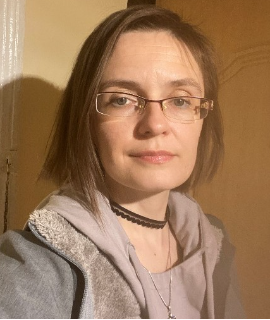Title : Audiogenic epilepsy model – Krushinsky-Molodkina strain rats: neurophysiology, genetics and behavior
Abstract:
The trait – audiogenic seizure proneness (audiogenic epilepsy, AE) in KM strain rats - is characterized by high expressivity and penetrance – the short latency (1-2 s) seizure fit in the 100 % of cases with maximal intensity of clonic and then tonic seizures of trunk and extremities musculature. The long lasting postictal catalepsy follows the audiogenic epilepsy fit. The postictal “audiogenic” catalepsy is also regarded as the perspective laboratory model of another type of brain pathology. The KM rat strain is maintained in the Laboratory of Physiology and Genetics of Behavior (Biology Department, Lomonosov Moscow State University) during 60 years and starting from 1989 – as the inbred strain). It served as the valuable laboratory model for testing the big range of anticonvulsant drugs (both - already used in clinic and the new ones). Valproate sodium, difeninum, carbamazepin, lamotrigine, levetiracetam and several other anticonvulsants proved to decrease both the intensity and increase the latency of seizure fit in response to sound. Audiogenic epilepsy seizure fit could be regarded as the model for pre-clinical investigation of anticonvulsant drugs. Audiogenic seizure fit is initiated in brain stem and the neural network which is responsible for initiation and sustaining of seizures in response to sound is now identified. It means that this pathological trait in audiogenic epilepsy prone rats could provide the important knowledge for the study of epileptogenesis. In order to create the more reliable group of control animals which would share the larger part of genotype of AE susceptible KM rats the new selection experiment was initiated in 2001. The aim of this selection was to breed the strain of rats which are related to KM by at least part of genotype but which would be non-prone to audiogenic epilepsy. The new strain was labeled as “0” strain. The proportion of rats with “0” reaction to loud sound exposure in “0” strain was about 50% at 21-th generation. The differences between KM and “0” strains were also found in the intensity of postictal catalepsy. We would like to point out that KM strain rats can be fruitfully used not only as an audiogenic convulsive seizure model, but also as a model of several other disorders, such as myoclonic hyperkinesis, acute disorders of cerebral circulation, cataleptic states of various genesis: spontaneous, post-convulsive, pharmacological, pinching, and comorbid neuropsychiatric disorders: anxiety, depressive-like states, cognitive deficits.
What will audience learn from your presentation?
• I would like to present our recent research results on audiogenic epilepsy model – Krushinsky-Molodkina audiogenic prone rats. It is including neurochemistry, genetics, psysiology and behaviour investigation.
• It might be interesting for the audience as a new approach to epilepsy modelling – working with non-pharmacological, non-invasive genetic model of the audiogenic epilepsy.
• Main advantages of our genetic model are following: clearness and reproducibility of the phenomenon, the ability to quantify indices, noninvasiveness of provocation, absence of difficulties in interpreting the results associated with side effects of provoking pharmacological drugs, genetic conditioning.




